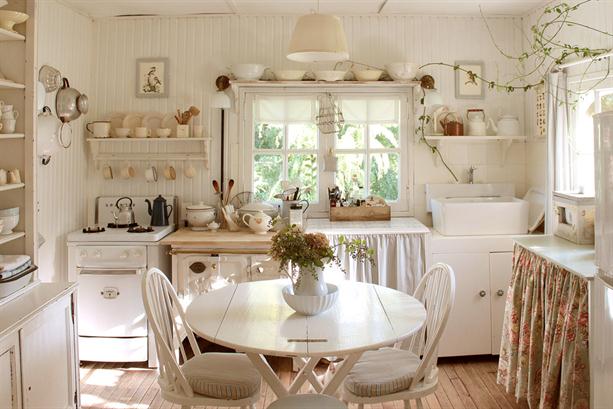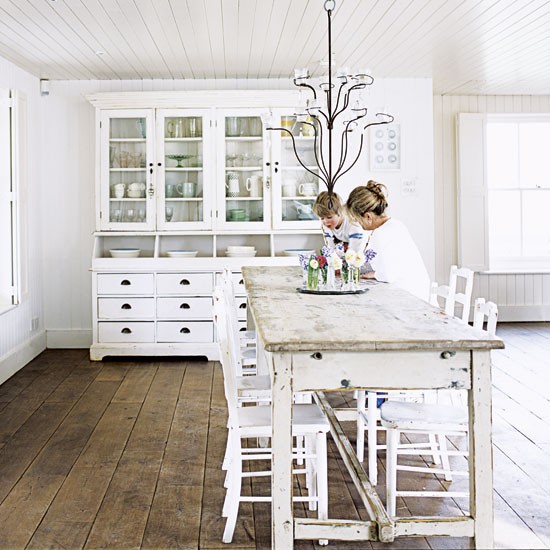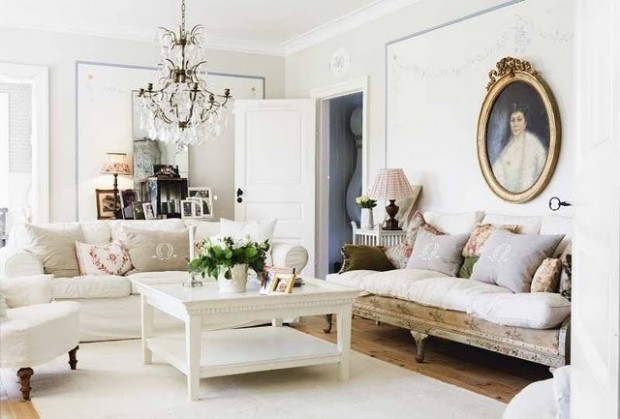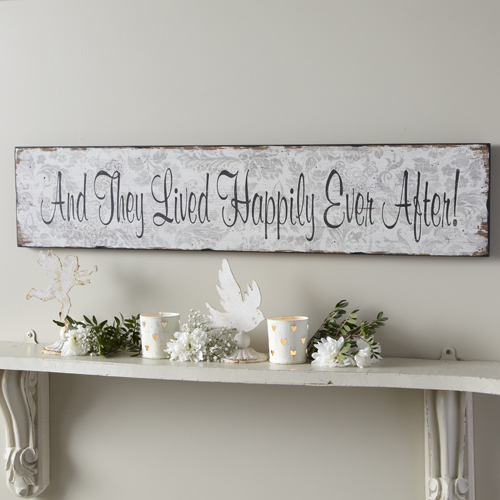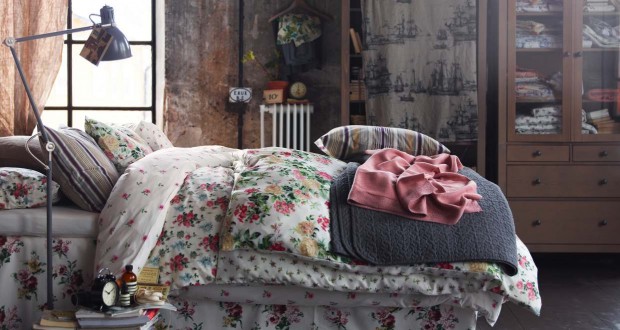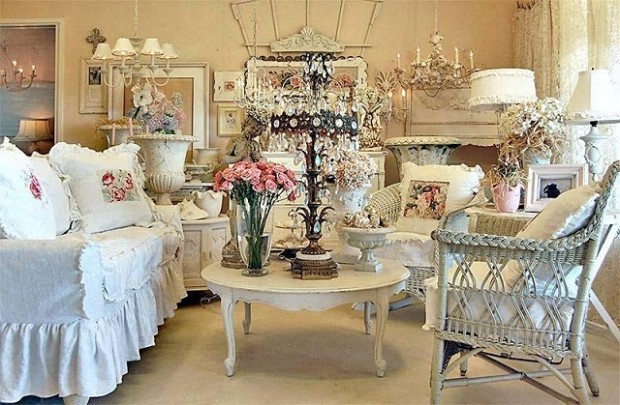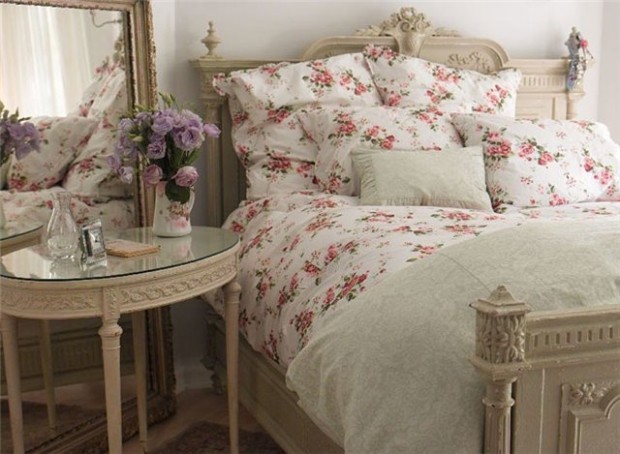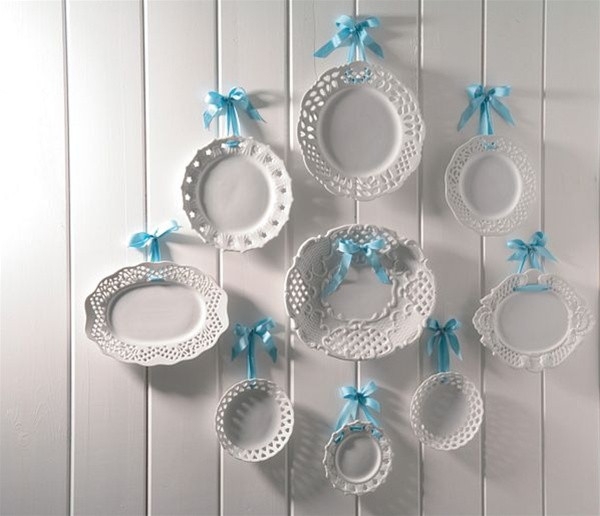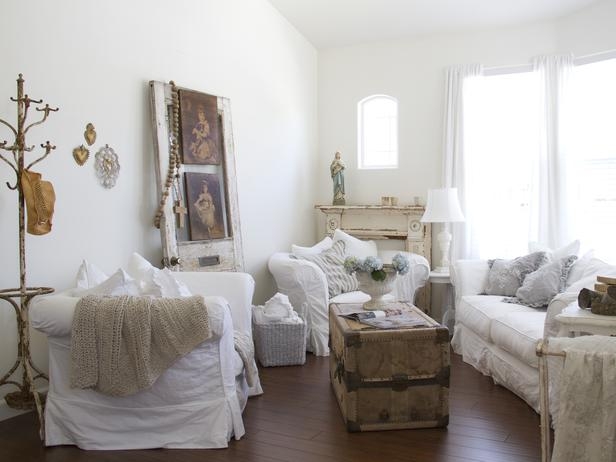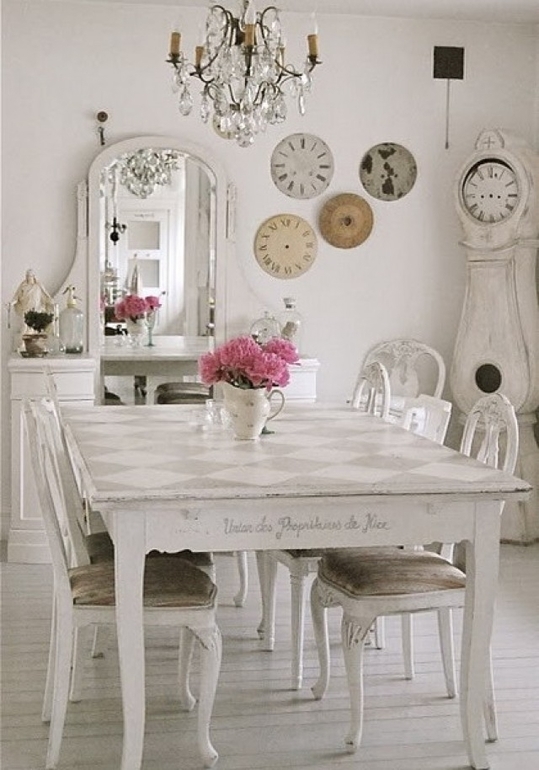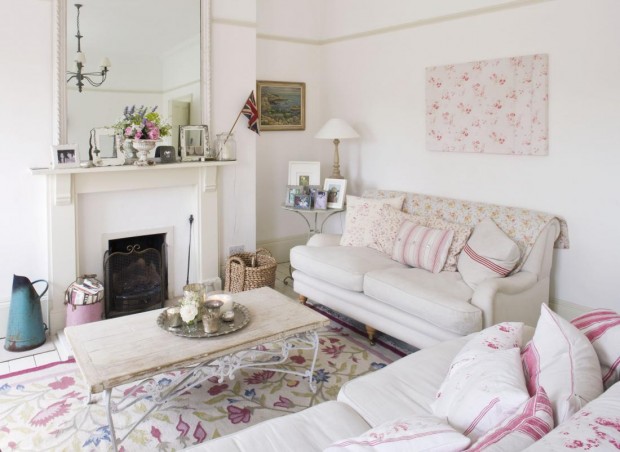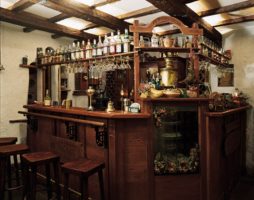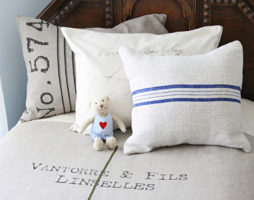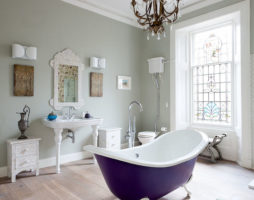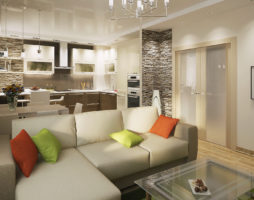These design styles are now extremely popular in the West, so it makes sense to take a closer look at their similarities and differences. Literally, the name of the style "Shabby Chic" can be translated as "shabby chic", which quite accurately translates its essence. The main focus of the style is on old furniture, but this is not just decrepit furniture from the "flea market", but always antique furniture that claims to be antiques. Especially appreciated wooden furniture in the style of "baroque" or "rococo".
Shabby furniture is related to Provencal furniture by the deliberate protrusion of cracks, scuffs, chips - defects that should certify and emphasize the antiquity of the furniture. Unlike the Provence style, where furniture should be strictly “grandmother's” and rustic, the main thing here is the “aristocratic” furniture. This word is not in vain put in quotation marks, the main principle of the ancestor of the style is not the pursuit of the authenticity of antiques, but the imitation of the "classical style". Therefore, furnishings do not have to be from an antique auction; “remakes” are also allowed, in which imitation is not particularly hidden.
Following the fashion for this style, many furniture manufacturers have launched a special edition of pseudo-antique furniture and sell it in stores. In our conditions, you can try to make such furniture yourself, especially since the elegance of the form is valued, and not the authenticity of the product (antique varnish, upholstery, author's brand, and so on). Even modern, emphatically casual painting of lacquered furniture is allowed, as in the Provence style.
As an interior style, "Shabby Chic" is relatively young - it appeared in England at the end of the last century. The history of its appearance is simple - a young designer, Englishwoman Rachel Ashville, took up the interior of her own house. Not having sufficient funds to purchase expensive antiques, she stubbornly searched for not very well-preserved antique items at flea markets, antique shops and shops. Buying beautiful antique furniture in the styles of "baroque", "rococo", "neoclassic" - she restored, restored it, not embarrassed to give the furniture a more modern look.
The addition of updated furniture to the interior required an appropriate organization of the space around it. Rachel carefully selected all the accompanying decor - textiles, decorations, curtains. When the work was completed, the designer liked the result so much that she gave it her own name - "Shabby Chic". This style quickly became fashionable, and Rachel, as is customary in the West, immediately began to publish books about him. It must be said that this idea is not new - the newly-minted rich have always tried to imitate any style. It's just that Rachel Ashville did it with artistic taste, not hiding the imitation and the presence of kitsch.
An authentic antique baroque interior can be carefully preserved for centuries. Or painstakingly assembled over decades from authentic items of that era and style. Both of these cost a lot of money. The Shabby Chic style does not adhere to these principles, so it can be called a "poor man's classic" in another way.
Take a closer look at the interior of this living room. There are quite a few absurdities in it. Low tables came into fashion much later and did not have such a shape - this is a clear imitation.According to the canons, an old female portrait can be present in the interior in two cases - if it is a family relic, or an original by a famous master. For the shabby style, such conventions are not important. It is important that the portrait is antique (and this is not the main thing, imitation is allowed).
Real estate owners, in pursuit of fashion, very often try to decorate their homes in the style of "Provence", "country" or "shabby chic". Residents of city apartments are not inferior to them, wanting to be original and bring a romantic Victorian atmosphere to their homes. At the same time, many do not understand the difference between these styles and mercilessly mix them. If you want to decorate your apartment in the shabby chic style, you need to understand this difference.
Furniture
Shabby style furniture is the main one, the whole interior is built around it. It should be initially elegant and luxurious (at least a few items). Be sure to be visible "time raid" - worn paint or varnish, cracks, chips. This feature is also characteristic of the Provence style, but elegance is not necessary in it.
For furniture, it is enough to be solid and old (if not to say “old-fashioned”). Instead of elegance, the Provence style professes a resemblance to rustic, durable and solid furniture.
As for the color in “shabby chic”, then, if it is not wood varnish, the advantage is white, all light, pastel, delicate shades, under which the rest of the design adapts. It is important that the furniture speaks of its former pomposity and bourgeoisness. Worn (or aged) gilding on reliefs and decorative elements is in a special fashion. Of the drawings, floral motifs are most often used, especially small roses.
Textile
Fabrics should be natural and luxurious. It can be silk, shabby brocade. Shades are necessarily pale, burnt out, muted. In our conditions, fabrics are one of the big problems in creating a uniform style. The old fabrics, of course, were not preserved. Finding new ones that look old, faded, burnt out is problematic.
Meanwhile, the shabby style is characterized by a pale stripe, a faded cage, and barely visible roses. Of these, sofa cushions (silk and satin), curtains, curtains are made. Curtains are characterized by the use of lambrequins, brushes, cascades.
Decor - jewelry and accessories
At first glance, the decor of the "Shabby Chic" style is similar to "Provencal". The same large number of small shabby figures, among which there may be genuine, fake, frankly kitsch. But the style "Provence" is characterized by flowers, birds and cockerels (imitation of the French village), and the main ones in "shabby" are angels.
To create this style, you can use numerous worn gilded frames, porcelain jewelry and dolls, bronze or gilded watches, boxes and caskets. There must be many such items. Artificial lighting - only pompous chandeliers (you can - from imitation crystal), lamps - only table lamps (with fabric lampshades).
Walls, floor and ceiling
Various options are available for walls. Peeling plaster, so beloved in the Provence style, is less preferable. One of the popular solutions is pale, faded wallpaper with the same roses or other floral motifs. Striped wallpapers, fabric wallpapers are often used (remember the difficulties with fabrics). Colors are light, sometimes pure white. Ideal - white color with a slight yellowness, as if from time to time. He is the best for the ceiling.
The snow-white ceiling, of course, will look too new. Stucco molding is desirable for the top of the walls, the ceiling, artificial cracks can be made on it. Worn or darkened gilding of decorative moldings, sockets under the chandeliers - a clear evidence of belonging to the "shabby chic" style. Ceiling beams characteristic of the Provence style are absolutely unacceptable.
The floor must be wooden, parquet or parquet board. Scuffs and dents are created artificially. Unlike "Provencal" floors, which are solid and practical (can be painted), "shabby chic" floors are desirable with an elegant parquet pattern. In extreme cases, let's say herringbone parquet with a clearly visible wood pattern. In utility rooms - it is permissible to use tiled tiles with the appropriate pattern and the same scuffs, cracks, chipped pieces.
Also on our website you can find other styles of interior:
Interior in Bavarian style
Interior in Moorish style
Art Deco style in the interior of the rooms
Futurism in interior design
